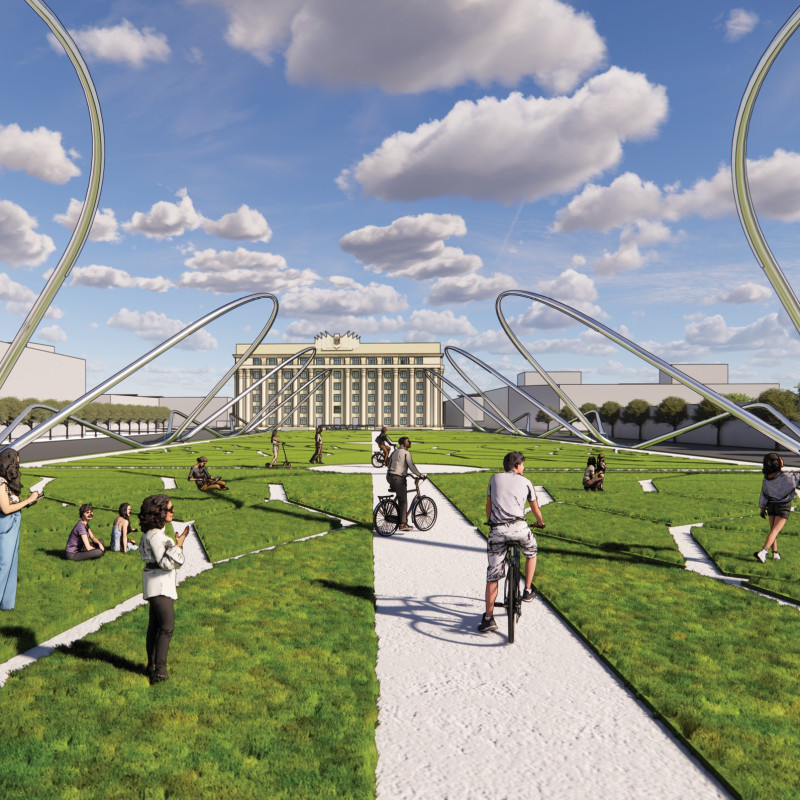5 key facts about this project
At its core, this design embodies a concept that prioritizes user experience and community interaction. The thoughtful layout promotes social connectivity while respecting personal privacy, allowing for a harmonious balance between public and private spaces. The overall function of the project is multifaceted, catering to both residential needs and communal activities. This dual approach effectively fosters a sense of belonging and encourages interaction among community members, emphasizing the architectural intention to create not just buildings, but vibrant environments.
The materials utilized in the construction reflect a careful consideration of durability and sustainability. Commonly used materials in this project may include locally sourced timber, recycled steel, glass, and eco-friendly insulation. Each material is selected not only for its structural integrity but also for its aesthetic contribution, allowing the building to blend naturally with its surroundings. Timber provides warmth and texture, while glass invites natural light, creating bright and inviting interiors. The incorporation of sustainable materials showcases a commitment to environmental stewardship, reducing the overall carbon footprint of the project.
One of the unique design approaches adopted in this project can be found in its integration of indoor and outdoor spaces. Extensive use of large, operable windows and sliding glass doors facilitates a fluid connection between the interior environment and the natural landscape outside. This feature not only enhances the visual experience but also promotes energy efficiency by maximizing natural ventilation and minimizing reliance on artificial lighting. Additionally, outdoor spaces are designed to be multifunctional, providing areas for relaxation, recreation, and gathering, mirroring the ethos of community-centric living.
The architectural design also emphasizes a strong sense of place, with careful consideration given to the building's orientation and relationship to sunlight and prevailing winds. This aspect of the design enhances energy efficiency and thermal comfort within the structure, contributing to a more sustainable architectural outcome. Smart design strategies have led to a layout that minimizes heat loss in winter months and reduces overheating in summer, proving the thoughtful application of environmental design principles.
The project’s architectural sections and plans thoughtfully illustrate the spatial organization and flow throughout the building. Variations in ceiling heights, strategically positioned skylights, and well-defined circulation paths enhance the overall user experience. Each space within the structure is designed with a purpose, ensuring that functionality is never sacrificed for aesthetics. By prioritizing both the practical needs and the visual appeal of the project, the design successfully resonates with its occupants.
Furthermore, the integration of smart technology throughout the design elevates the living experience. Automated systems for lighting, heating, and cooling adjust to the habits of the residents, providing greater efficiency and convenience. This conscious incorporation of technology ensures that the architecture remains relevant and responsive to the needs of modern living.
As one explores the intricate details of this project, it becomes evident that the architect's vision extends beyond mere construction; it embodies a comprehensive understanding of the environmental, social, and human factors involved in creating a space that people want to inhabit. The project stands as a testament to contemporary architectural ideas that seek to harmonize with nature while simultaneously addressing the practical needs of its users.
For those interested in delving deeper into this architectural project, a thorough examination of the architectural plans, sections, and other related designs is encouraged. These elements provide valuable insights into the thoughtful considerations and innovative approaches that characterize this impressive project, allowing for a comprehensive understanding of its design philosophy and outcomes.


 Hsin Kuang Chen,
Hsin Kuang Chen, 























